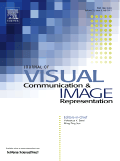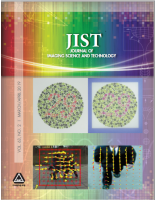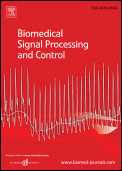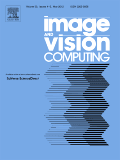
Journal of Real-Time Image Processing
metrics 2024
Pioneering Research in Instant Image Processing Applications
Introduction
Journal of Real-Time Image Processing, published by SPRINGER HEIDELBERG, is a renowned peer-reviewed journal dedicated to the field of real-time image processing. With an ISSN of 1861-8200 and an E-ISSN of 1861-8219, this journal operates under a rigorous academic framework, ensuring high-quality publications that cater to both theoretical and practical advancements in the discipline. Since its inception in 2006, it has continually evolved, maintaining a Q2 ranking in Information Systems according to the 2023 Category Quartiles. This journal ranks #103 out of 394 in Scopus for Computer Science - Information Systems, positioning it within the top 27% percentile, which underscores its significance in the research community. Its focus on the intersection of image processing and real-time applications makes it a vital resource for researchers, professionals, and students eager to explore and contribute to cutting-edge developments in the field. Though it does not currently offer open access, the journal's comprehensive scope and commitment to disseminating impactful research make it an essential platform for advancing knowledge in real-time image processing.
Metrics 2024
 0.70
0.70 2.90
2.90 1.90
1.90 43
43Metrics History
Rank 2024
Scopus
IF (Web Of Science)
JCI (Web Of Science)
Quartile History
Similar Journals

JOURNAL OF VISUAL COMMUNICATION AND IMAGE REPRESENTATION
Connecting Visionaries in Image and Media TechnologyJOURNAL OF VISUAL COMMUNICATION AND IMAGE REPRESENTATION, published by Academic Press Inc Elsevier Science, is an influential platform dedicated to the realms of visual communication, media technology, and advanced image representation. With a strong focus on interdisciplinary approaches, this journal aims to foster the exchange of innovative ideas among researchers and professionals in the fields of computer vision, image processing, and signal processing. Recognized for its significance, it boasts an impressive impact factor within its category quartiles; notably, it ranks Q2 in Computer Vision and Pattern Recognition and Electrical and Electronic Engineering, while achieving Q1 in Media Technology. Based in the United States, the journal not only provides valuable insights into the latest developments from 1990 to 2024 but also encourages cutting-edge research that enhances multimedia systems and user interactions. As a vital resource for students, researchers, and industry professionals alike, the journal ensures a robust understanding of visual information processing, critical for navigating today's digital landscape.

JOURNAL OF IMAGING SCIENCE AND TECHNOLOGY
Advancing Knowledge in Optics and MaterialsJOURNAL OF IMAGING SCIENCE AND TECHNOLOGY, published by I S & T - SOC IMAGING SCIENCE TECHNOLOGY, is a pivotal resource in the realms of imaging science, optics, and materials. With its ISSN 1062-3701 and E-ISSN 1943-3522, this journal has been disseminating influential research since 1993 and continues to be a vital platform for scholars up to 2024. Despite its varied quartile rankings across disciplines—such as Q4 in Atomic and Molecular Physics and Optics, and Q3 in Chemistry (Miscellaneous) and Electronic, Optical and Magnetic Materials—it provides an essential forum for innovative ideas and advancements. The journal’s focus on interdisciplinary connections encourages collaboration among researchers in the fields of chemistry, computer science, and physics. Researchers, professionals, and students interested in exploring the latest imaging technologies and methodologies will find invaluable insights within its pages, making it a significant addition to their academic libraries.

MULTIMEDIA SYSTEMS
Transforming Research into Multimedia SolutionsMULTIMEDIA SYSTEMS, published by SPRINGER, is a premier academic journal dedicated to the dynamic field of multimedia technology and its applications across various domains. With the ISSN 0942-4962 and E-ISSN 1432-1882, this journal has established itself as an essential resource since its inception in 1993, providing researchers and professionals with rigorous peer-reviewed articles that explore innovative developments in Media Technology, Computer Networks, Hardware Architecture, Information Systems, and Software. As a testament to its academic impact, MULTIMEDIA SYSTEMS has attained a Q2 ranking in multiple key categories for 2023, alongside a notable Q1 ranking in Media Technology, highlighting its significance within the community. With a rich repository of knowledge and ongoing commitment to advancing multimedia research, this journal is an invaluable asset for those seeking to stay informed about cutting-edge technologies and methodologies. While the journal follows a traditional subscription model and is not presently open access, it ensures high-quality content that serves the scholarly needs of its audience, facilitated by its accessibility from Germany's respected academic infrastructures. For inquiries and submissions, the journal is based in New York, NY, further illustrating its global academic reach.

Biomedical Signal Processing and Control
Advancing biomedical innovation through signal mastery.Biomedical Signal Processing and Control is a premier academic journal published by ELSEVIER SCI LTD that stands at the forefront of the rapidly evolving fields of biomedical engineering, health informatics, and signal processing. With an impressive impact factor reflecting its scholarly influence and high standards of research, this journal has been recognized in the Q1 quartile category across multiple disciplines as of 2023. Specifically, it holds esteemed positions within Biomedical Engineering, Health Informatics, and Signal Processing, where it ranks in the top tier of its field on Scopus: #19/131, #21/138, and #47/303 respectively. Published continually from 2006 to 2024, the journal serves as a critical platform for researchers, healthcare professionals, and students, fostering innovation in signal processing techniques and their applications in biomedical systems. Access to cutting-edge research and methodologies makes it an indispensable resource for advancing knowledge and practice within these interdisciplinary domains.

Traitement du Signal
Empowering Innovation in Electrical EngineeringTraitement du Signal, published by the INT Information & Engineering Technology Association, is a distinguished journal that serves the vibrant field of Electrical and Electronic Engineering. With an ISSN of 0765-0019 and an E-ISSN of 1958-5608, this journal has made significant contributions to the discipline since its inception. While it currently operates under a non-open access model, it maintains its commitment to disseminating valuable research from 2010 to 2023, despite its recent discontinuation in Scopus coverage. Recognized in the third quartile (Q3) of the category in 2022, the journal provides a platform for researchers, professionals, and students to publish their findings on topics such as signal processing, communications, and related technologies. By curating high-quality articles, Traitement du Signal plays a crucial role in advancing knowledge and fostering innovation within the electrical and electronic engineering community.

MACHINE VISION AND APPLICATIONS
Unveiling New Dimensions in Pattern Recognition.MACHINE VISION AND APPLICATIONS is a distinguished peer-reviewed journal published by SPRINGER, serving as a vital platform for innovative research in the fields of computer vision, pattern recognition, and their applications within hardware and software systems. Since its inception in 1988, the journal has been at the forefront of disseminating cutting-edge findings and advances in machine vision technologies, significantly contributing to the global academic discourse. With an impressive track record, the journal ranks in the Q2 category across various domains in the 2023 Scopus rankings, reflecting its esteemed position in Computer Science Applications, Computer Vision and Pattern Recognition, Hardware and Architecture, and Software. Although it does not currently offer open access options, MACHINE VISION AND APPLICATIONS remains a critical resource for researchers, professionals, and students eager to explore emerging trends and methodologies in the rapidly evolving landscape of machine vision.

IMAGE AND VISION COMPUTING
Exploring the frontiers of image and vision science.Image and Vision Computing, published by Elsevier, serves as a leading international journal focused on the dynamic fields of computer vision, pattern recognition, and signal processing. With its esteemed Q1 category rankings in these areas and an impressive standing in Scopus metrics, where it ranks 19th in Computer Vision and 23rd in Signal Processing, this journal has firmly positioned itself at the forefront of academic research and innovation. Established in 1983, it continues to publish cutting-edge research that drives advancements in technology and applications across various domains. The journal is committed to disseminating high-quality, peer-reviewed articles that address significant challenges and propose novel solutions, making it an essential resource for researchers, practitioners, and students alike. While not an open access journal, Image and Vision Computing offers a wealth of valuable insights into the ever-evolving landscape of visual computing technologies.

International Journal of Image and Graphics
Elevating Knowledge in Computer Vision and DesignInternational Journal of Image and Graphics, published by World Scientific Publishing Co. Pte Ltd, serves as an essential platform for scholars and practitioners in the realms of Computer Graphics, Computer-Aided Design, and Computer Vision and Pattern Recognition. Established in 2001 and based in Singapore, this journal has become increasingly influential, with a reputation reflected in its Q3 and Q4 rankings across key categories in Scopus, highlighting its growing impact in the academic community. Open access options remain limited; however, the journal's commitment to disseminating high-quality research allows for a rich exchange of ideas among professionals and students alike. As the 2023 metrics indicate, contributions to the journal not only enhance individual academic portfolios but also promote advancements in image processing, fostering innovation and growth within the discipline until at least 2024. It is thus a vital resource for anyone looking to deepen their knowledge and understanding of contemporary trends and technologies in image processing and related fields.

Journal of Signal Processing Systems for Signal Image and Video Technology
Advancing Innovations in Signal Processing and Imaging.Journal of Signal Processing Systems for Signal Image and Video Technology, published by SPRINGER, is a leading interdisciplinary journal dedicated to advancing research and development in the fields of signal processing, image processing, and video technology. With an ISSN of 1939-8018 and an E-ISSN of 1939-8115, this journal emphasizes both theoretical and practical applications, boasting a wide scope that ranges from control and systems engineering to hardware architecture. Since its inception in 2008, it has gained a solid reputation, reflected in its 2023 category quartile rankings—including Q2 in Control and Systems Engineering and Q3 in Signal Processing—demonstrating its significance within the academic community. The journal is underpinned by a commitment to open access, promoting broad dissemination of knowledge, and is particularly vital for researchers, professionals, and students looking to contribute to and stay updated in these rapidly evolving fields. With ongoing explorations into the convergence of technology and methodology until 2024, the journal stands as a crucial resource for the latest innovations and discussions in signal processing systems.

IEEE MULTIMEDIA
Exploring innovative intersections of technology and creativity.IEEE Multimedia, published by IEEE Computer Society, is a prestigious journal dedicated to advancing the fields of multimedia technology and innovations in computing. With an ISSN of 1070-986X and an E-ISSN of 1941-0166, the journal has established a significant impact within the academic community, holding an impressive ranking in various categories: Q2 in Computer Science Applications, Hardware and Architecture, Signal Processing; Q1 in Media Technology; and Q2 in Software as of 2023. Spanning from 1994 to 2024, IEEE Multimedia strives to publish cutting-edge research and development findings, focusing on the convergence of multimedia with engineering and computing disciplines. Researchers and professionals across these domains are encouraged to engage with its rigorously peer-reviewed content, enhancing their understanding and application of multimedia methodologies in their respective fields.